Spam
What is Spam?
Spam is the bane of every email marketer’s existence and a minor annoyance to its recipients.
We’ve all received spam messages, and usually don’t give them much attention or thought.
Usually, spam emails are low-quality messages that are blasted out by the hundreds with very little effort put into them.
Most of the time, these messages are trying to sell you something, such as low-quality “SEO” services (selling links or guest posts), or a product that is completely irrelevant to you.
However, even legitimate business emails can go to spam.
And if you rely on cold emails for any of your business goals, to any extent, it’s important to understand why your emails can be going to spam, and how to avoid it.
Why do Emails Go to Spam?
There are dozens of different reasons why your emails could be getting flagged as spam, but if we take a step way back, there are two big ones:
- You have been manually flagged by a user
- You triggered a spam filter
The most surefire ways to trigger spam filters are:
- Blast out large quantities of emails (hundred or more) in a short period of time or with little to no delay between messages
- Use spam words in the subject line or body of your emails
- Don’t have proper domain authentication set up prior to doing outreach
- Have a high bounce rate
Spam filters take care of most spam messages, so it’s rarer to have an actual human mark your message as spam, but the weight of each manual flag is tremendous.
Only one or two manual spam reports out of a hundred messages can greatly damage your account’s overall email deliverability.
The easiest way to get someone to flag you as spam is to keep messaging them when they’re clearly not interested.
This includes sending way too many follow-ups (3 or more), doing so too often (every day), or by simply contacting completely irrelevant people – whether they are not the right decision-maker within the company, or they are not in need of whatever you’re offering them.
Now, let’s take a look at some of the commost common spam words as avoiding them is one of the most basic steps you can undertake to avoid getting flagged as spam.
Common Spam Words
There are thousands of spam words you’d never even thing of as a spam word at first, but the most common ones are certain symbols, phrases the create a sense of urgency, and, of course, false promises.
- #1
- $$$
- Make $
- Save $
- 0%
- 0% risk
- 100%
- 100% free
- 100% satisfied
- 99.9%
- 50% off
- 4U
- This won’t last
- Urgent
- What are you waiting for?
- While supplies last
- Once in a lifetime
- Only for you
- Will not believe your eyes
- You are a winner
- You have been selected
- Cancel at any time
- Last chance
- Last day
- Don’t wait
- Join millions of people
- No hidden charges
- No hidden costs
- Lose weight
- Best price
- Best rates
- Cash bonus
- Money order
- Make money
- Big bucks
- Pure profits
- Cures
- Weight loss
- Meet singles
- No catch
- No cost
- No credit check
- No fees
- No gimmick
- Refinance
- No interest
- No investment
- No capital
- No obligation
- No purchase necessary
- No questions asked
- No strings attached
- No experience
- Requires initial investment
- This isn’t a scam
- This isn’t junk
- This isn’t spam
- Earn extra cash
- Earn extra income
- Additional income
- Expect to earn
- Fast cash
- Financial freedom
- Lowest price
- Free access
- Free consultation
- Free hosting
- Free info
- Free investment
- Free membership
- Free money
- Free preview
- Free quote
- Free offer
- Free sample
- Free trial
- Free web traffic
- Free search engine listings
- Free gift
- Free DVD
- Full refund
- Name brand products
- Month trial offer
- Get out of debt
- Increase sales
- Increase traffic
- Satisfaction guaranteed
- Get paid
- Get rich
- Unsecured credit
- Own boss
- Work from home
- Home-based business
- No credit card
- Accept credit cards
- Credit card offers
- Low mortgage rates
- Low interest rates
- Easy terms
- Priority mail
Note: these are just the most common and obvious spam words. Even if your email doesn’t contain any of these, it’s still a good idea to run a spam check before hitting “send”, just to be safe. We will talk more about how you can do that further down in the article.
Spam Example
The following example is an email that landed in our own spam folder:
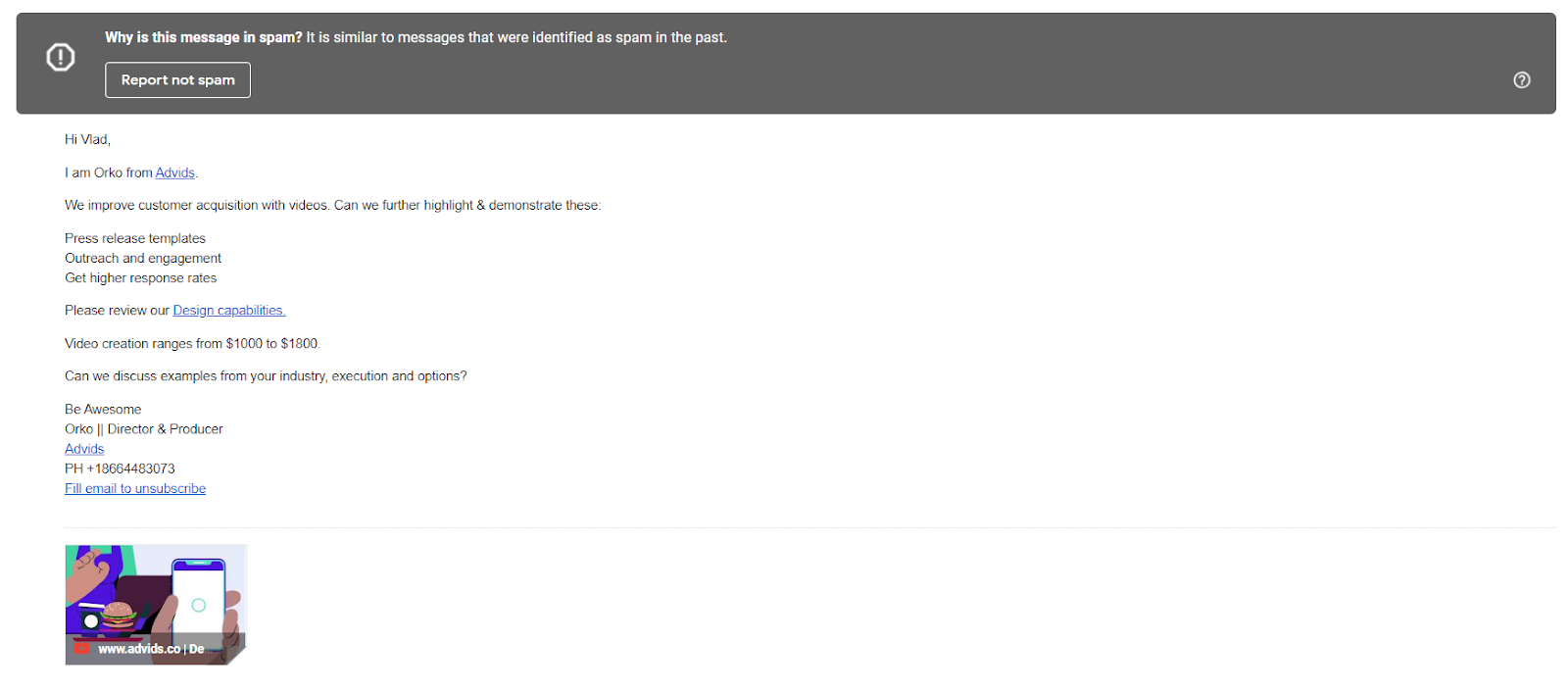
How to Make Sure Your Emails Don’t Land in Spam?
There are quite a few practices that you can employ to improve your email deliverability.
Let’s take a closer look at each one in more detail.
Authenticate Your Domain
Setting up proper authentication protocols is the absolute first thing you should do before you even send a singular email.
There are three authentication protocols you need to know about: DKIM, DMARC, and DMARC.
DKIM is an email authentication method designed to detect email spoofing by verifying the domain name from which an email message was sent.
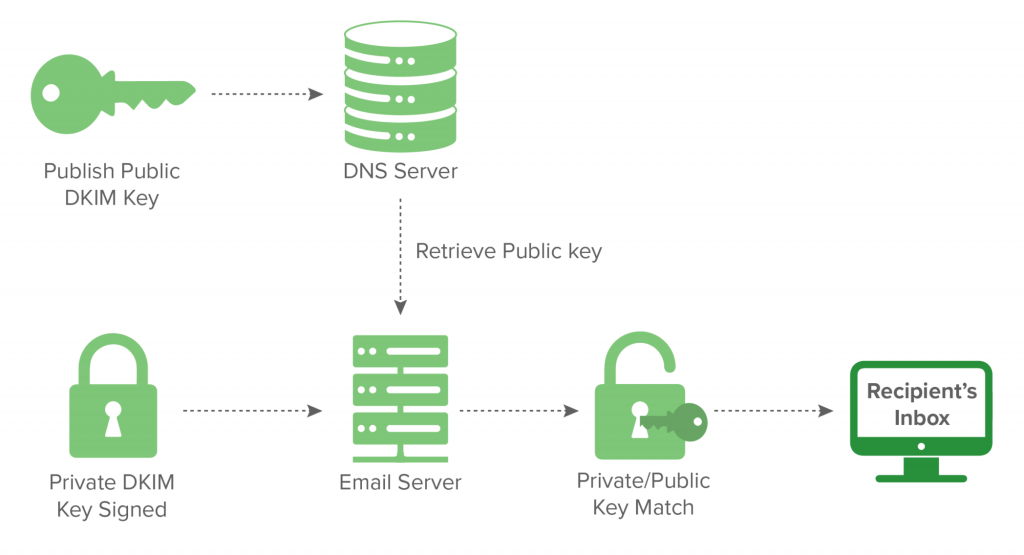
It works by using a cryptographic signature in the email header to verify that the message has not been altered during transit.
The signature is generated using a private key that is held by the sender’s domain and stored in the domain’s DNS record.
When the recipient’s mail server receives the email, it looks up the public key stored in the DNS record and uses it to verify the signature. If the signature is valid, the message is considered to be from the claimed sender.
DMARC is an email authentication protocol designed to protect against email spoofing.
It works by verifying the domain name from which an email message was sent and then taking action based on whether or not the domain name matches the domain name that is specified in the email’s “From” field.
DMARC can be configured to reject messages if the domain name does not match, or to quarantine them if it does match. It also provides a reporting mechanism that allows senders to verify the effectiveness of their authentication measures.
SPF is an email authentication protocol designed to detect email spoofing by verifying the IP address from which an email message was sent.
When an email is received, the receiving mail server looks up the sender’s domain in the DNS record and looks for the SPF record.
This record contains a list of IP addresses that are authorized to send email for that domain.
If the received email’s IP address does not match any of the authorized IP addresses, the message is considered to be from a spoofed source.
Don’t Send Too Much, Too Fast
Hundreds of emails on a daily basis is too much for any singular account.
Personally, we don’t recommend sending any more than 50 emails per day from any of your accounts.
If you send 200 emails as an exception one day, your email reputation won’t suffer a huge hit, but if you do it every day, it will slowly decline until most of your emails are landing directly in people’s spam folder.
If you’re in need of mass outreach (such as for link building or cold sales), it’s best to spread out the load to several email addresses so that you’re able to send the same total number of emails without putting yourself at risk.
Warm Up Your Email
There are two ways to warm up your email.
For best results, it’s recommended to utilize both strategies at the same time.
The first one is manual.
It involves limiting your daily number of sent emails to a low count (for example, 10), and slowly increasing that number week by week until you reach your desired amount.
This action slowly warms up your accounts and reduces the chances of them getting flagged as spam.
The second method involves using an email warmup tool.
There are many of them available (such as Lemwarm, Warmup Inbox, etc.) and they all function in a similar, if not identical manner.
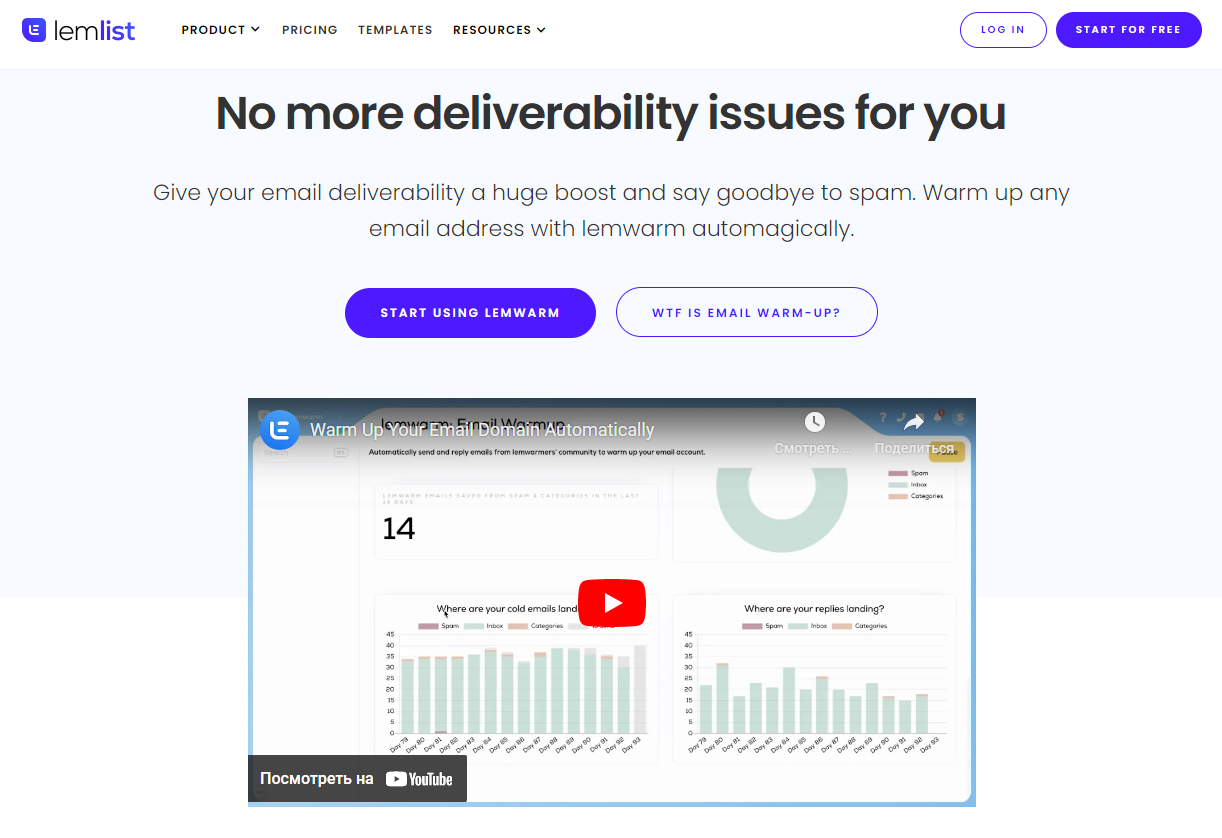
Once you connect your account to one of these tools and start the service, it will start sending messages on your behalf to other users in the system.
It will also start replying to your warmup emails from their end, and even flag your emails as not spam if they automatically land in the recipient’s spam folder.
To ESPs (email service providers), these messages look like real conversations, which will slowly increase your email reputation over time.
This, in turn, will reduce the chance of your emails landing in spam in any of your real email campaigns.
Check for Spam Words
Checking for spam words only takes a few seconds but can drastically reduce your chances of triggering spam filters.
In fact, Respona comes with a spam checker of its own.
When preparing your email sequence in Respona, you can press the red button in the top right corner and the tool will estimate your chances of getting a response based on your subject length, word count, question count, and, of course highlight any spam words in your pitch.
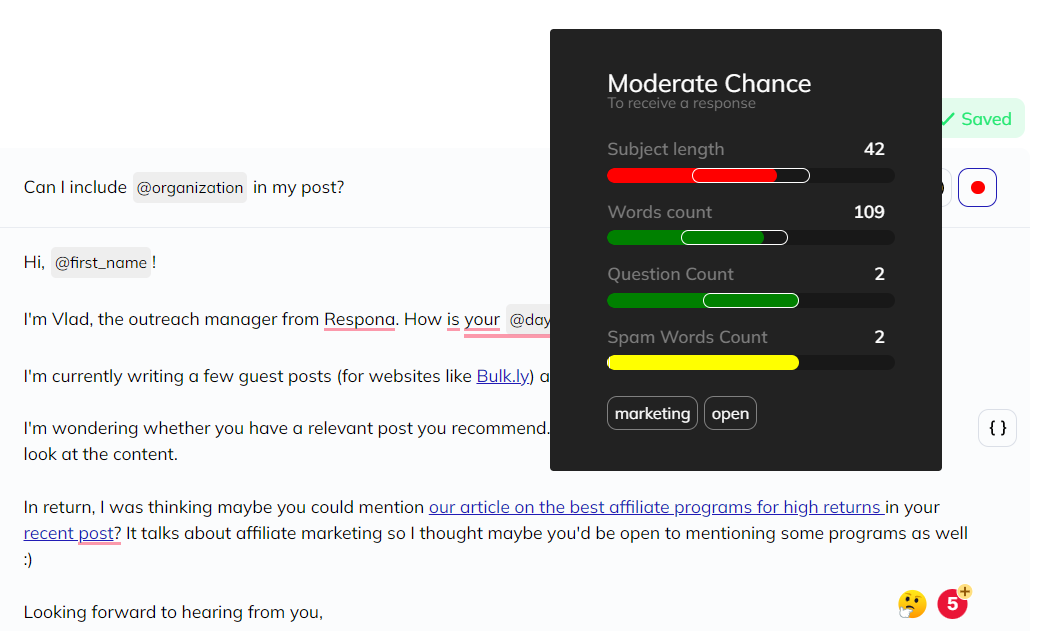
Use a Double Opt-In
A double opt-in is a process in which a user signs up for your newsletter, and confirms their sign-up by clicking on the confirmation button in an email they get from you immediately after.

While not exactly applicable to cold outreach, double opt-ins can reduce the spam rates of your email newsletters as they ensure only the people that actually want to see your content, see it.
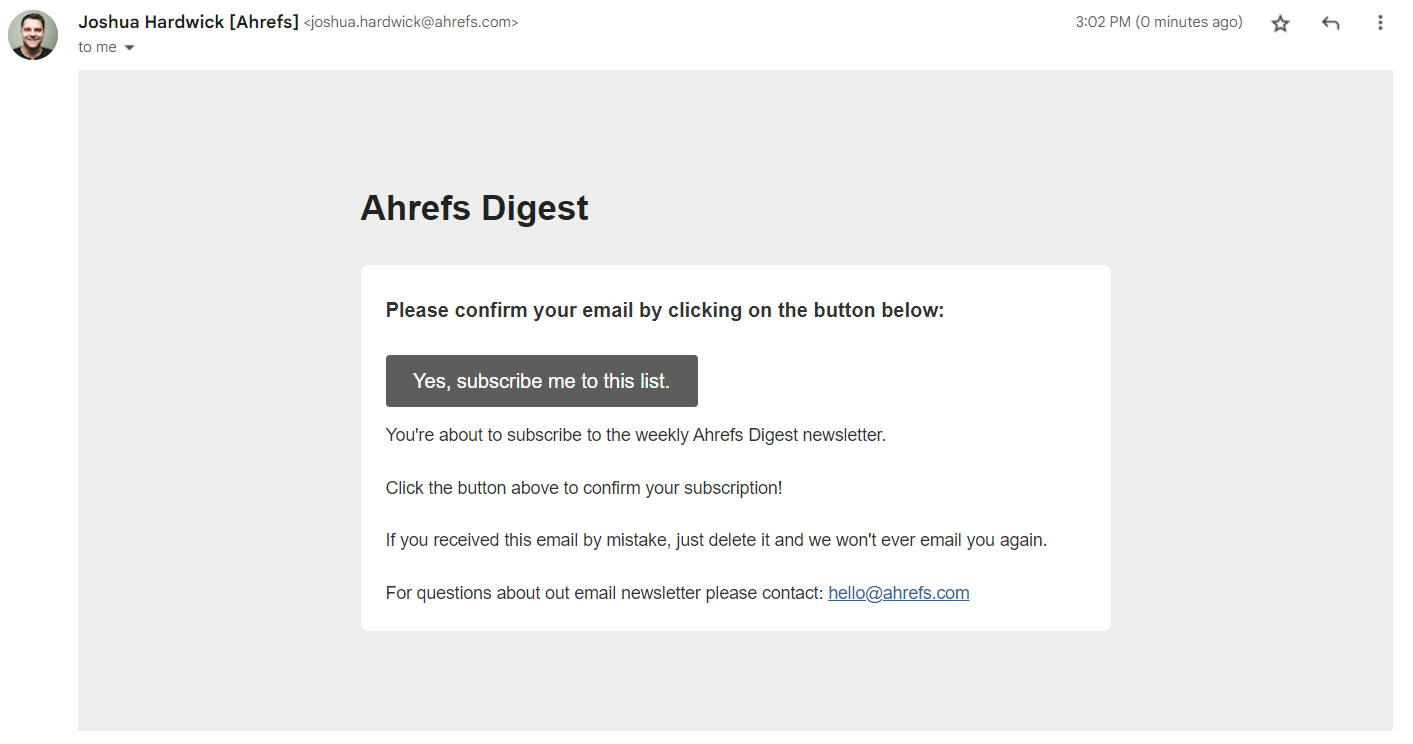
After all, there are few things less frustrating than seeing an unwanted email newsletter that you never signed up for clogging your business email inbox week after week.
Offer an Unsubscribe Link
An unsubscribe link might seem like a minor addition to your pitch, but serves a very important purpose, allowing your recipient to make sure they never see another one of your emails without asking you to stop messaging them in text or by marking your email as spam.
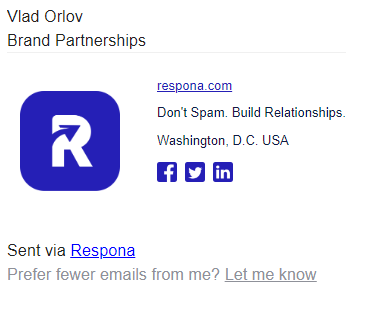
This won’t stop ALL people from reporting you as spam, but it will save you from quite a few messages from annoyed recipients calling you a spammer.
Always Verify Emails
Email verification is an essential step in prospecting for contact information.
If you create outreach campaigns with Respona, you don’t have to worry about this process as the tool consolidates data from over 24 data providers to find and verify contact information in real-time.
However, if you don’t find contact information inside Respona, it’s worth to run it through an extra round of verification to make sure you’re only reaching out to valid contacts.
Reaching out to an invalid contact will result in a bounce. A high bounce rate serves as an indication to ESPs that you’re guessing emails, which damages your domain reputation and hurts your deliverability in future campaigns.
Clean Your Email List
If you keep an email list, you need to be aware of a phenomenon called “list decay”.
Business emails become inactive or even repurposed to spam traps very quickly – so even an email that you collected and verified only a couple of weeks ago may no longer be safe to reach out to.
So, regular email list cleanups are a must. In fact, it’s a good idea to double-check any opportunities from your list before each round of outreach to try and eliminate as many bounces as you can.
Randomize Delay Between Your Messages
Blasting out all of your daily emails (even if there aren’t that many of them) is a good way to get on email service providers’ bad side.
A randomized delay between messages simulates a human sender, even if you use an outreach automation software.
In fact, you can customize the delay between your messages with Respona, as well as randomize it:

Avoid Excessive Follow-Ups
Be respectful of people’s time. One or two follow-ups is enough.
If they still don’t reply after two follow-ups, they’re probably not interested.
Any further follow-ups only increase your chances of getting flagged as spam – not get a response.
You don’t want to be that guy – this is their fourth follow-up. And our support system as well, not an actual inbox.
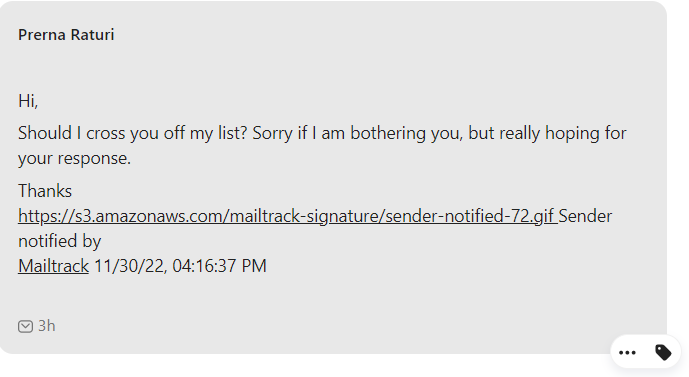
Bottom Line
If you’re relying on email outreach to any degree, reducing spam rates as much as possible should be one of your top priorities.
To sum it up, some of the best ways to do so are:
- Always verify recipients’ emails before sending and regularly clean up your email list
- Don’t send over 50 daily emails from any single email address and even out the load between multiple accounts (create new ones of you need)
- Authenticate your email domain and warm up new accounts before sending real campaigns
- Use a double opt-in for email newsletters
- Check all of your emails for spam words and offer an unsubscribe link at the bottom
- Randomize your delay between emails so your sending pattern looks more “human” to ESPs
